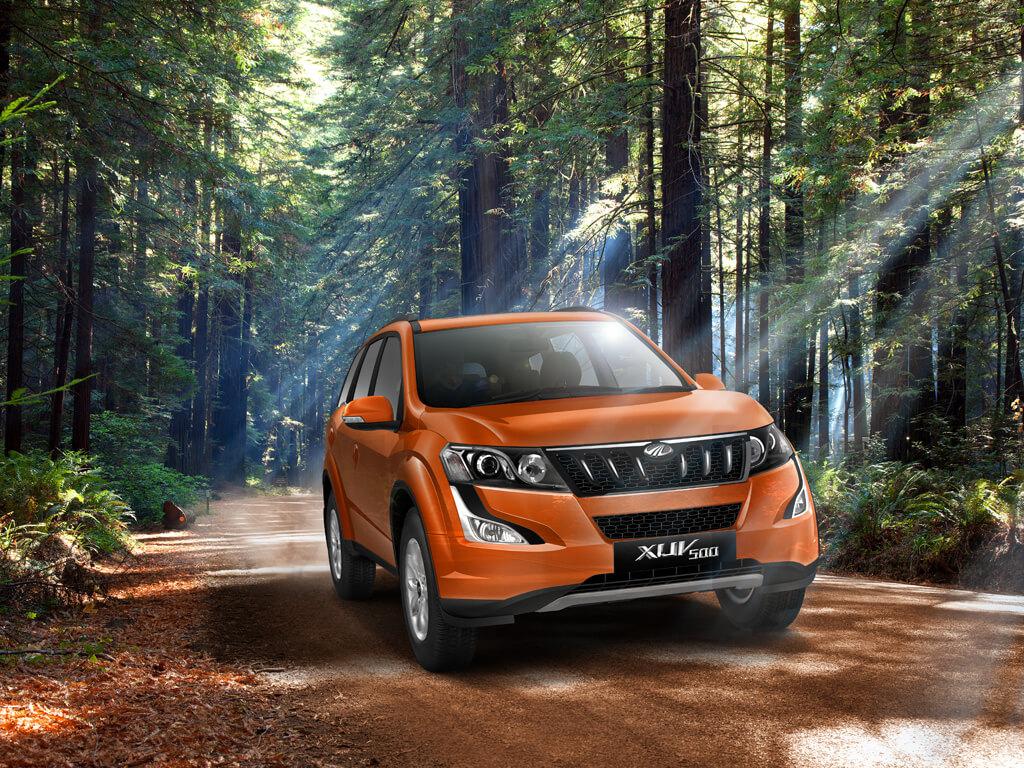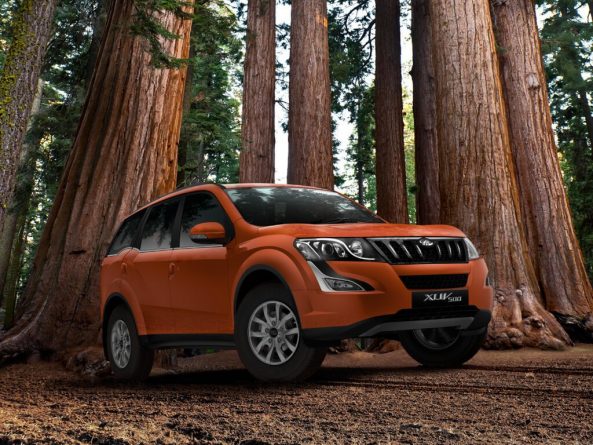The new age XUV500 surely gets a longer equipment list making it more desirable against the Tata Safari Storme facelift or the least priced Renault Duster in the segment.

SUVs look dominating, offer a lot of street cred and certainly can tackle the worst of roads with aplomb.
Following these principles, Mahindra launched the XUV500 in 2011 that has been a massive success and now, four years later the automaker has brought the facelifted version of its global SUV with new features and a cosmetic revision calling it “New Age”. But that’s also the case with the recently launched Tata Safari Storme facelift. While these may be the brutes in the segment, the third contender is the popular selling Renault Duster which offers similar attributes as the other two but with compact dimensions and a smaller price tag. So, how do all the three fare against each other? Read on to find out.
Styling – Mahindra has worked hard on restyling the XUV500 that was never a bad looker in the first place. The new age XUV500 gets a restyled front fascia with a contoured bonnet, new gloss black grille with chrome garnish and a reworked bumper with chrome enclosures on fog lamps. The SUV gets updated with S-shaped LED DRls and static bending projector headlamps with new 17-inch 10-spoke alloys. In comparison, the facelifted Tata Safari Storme gets a new honeycomb mesh grille with bold STORME badging, reworked bumper and TATA embossed on the tailgate; most of which can be overlooked. The Duster was launched in 2012 and has been pretty much the same ever since. There have been some gradual changes over the years though, especially with the AWD version that receives smoked headlamps, gun metal finish alloy wheels and AWD decals at the sides.
Dimensions – The 2015 Safari Storme is the largest measuring 4655 mm in length, 1965 mm in width and 1922 mm in height. In comparison, the XUV500 is 70 mm shorter in length at 4585 mm, 1890 mm in width and 1785 mm in height. The Duster is visibly the smallest in this comparison at 4315 mm in length and also loses out with a width of 1822 mm and height of 1695 mm. The Safari though has smallest wheelbase at 2650 mm while the Duster is marginally longer at 2673 mm and the XUV500 has the longest wheelbase at 2700 mm. Save for the Safari Storme that is based on a ladder on frame chassis, the Duster and XUV500 get a monocoque chassis which ensures better drivability and lesser body roll.
Features – Undoubtedly, the 2015 XUV500 facelift leads the pack here. There is an abundance of equipment on the SUV on the new range-topping W10 trim. You get keyless entry, push button start, new 7-inch infotainment system with navigation, electric sunroof, reverse camera, and a 6-way electronic adjustable driver’s seat. In contrast, the Renault Duster is similarly equipped with a touchscreen infotainment system with navigation, cruise control, but misses out on projector lamps, reverse camera, push button start, automatic climate control that is available on the Mahindra. The Safari Storme facelift despite the additional tech is the least equipped here. There is no touchscreen display unit or most of the aforementioned features from either rivals; but the Harman infotainment unit offers a host of compatibility options.
Seating Capacity – Being a compact SUV, the Duster is a strict 5 seater. You can add optional jump seats from the dealer but aren’t the best in comfort. This is where the Mahindra XUV500 comes in handy with three front facing rows that can carry up to 8 passengers with relative ease. Lastly, the Tata Safari Storme facelift feels the most disappointing as it continues to offer jump seats in the last row, something which even the Scorpio upgraded from last year.
Engine – Both the Safari Storme facelift and new age XUV500 are powered by a 2.2-litre diesel engine, but the Safari is more powerful churning out 150 PS and 320 Nm of torque. The XUV500 facelift continues with the same 140 PS and 330 Nm of torque. The Renault Duster sports the smallest powerplant using a 1.5-litre diesel motor that belts out 110 PS and 245 Nm. The Duster and XUV500 come paired to a 6-speed manual gearbox while the Safari continues with a 5-speed unit. Another factor that needs to be considered is the weight of these SUVs where the Duster emerges as the lightest at 1290 kgs, followed by the Safari Storme at 2095 kgs and the XUV500 the heaviest at 2510 kgs.
Price – As different they are, the pricing also sets either models way apart from each other. The lightest on weight and also on the pocket continues to be the Renault Duster with the range-topping RxZ AWD trim priced at Rs. 13.55 lakhs. The Tata Safari Storme facelift is up next priced at Rs 14.34 lakhs for the VX 4×4 trim but loses out on several features that are otherwise available on the Duster. Finally, the new age XUV500 emerges as the most expensive here priced at Rs. 15.99 lakhs for the new W10 trim.
Verdict – The thumb rule says that a product in India needs to be big and value for money at the same time. Following this rule, the Duster makes a compact case for itself as a value for money offering but limits on several conditions including power, presence and seating capacity. The Safari Storme facelift does not really emerge as an updated version here. With negligible exterior changes and few features added to the list, the Safari is best for those who like the brand and its off-roading abilities. This leaves us with the 2015 XUV500 which certainly has improved in several ways. A ton of new tech added to the list and the proven powertrain continue to make the SUV a top contender against its rivals. If you can look past the chrome overkill exteriors, the XUV500 facelift is our pick in this comparison.





